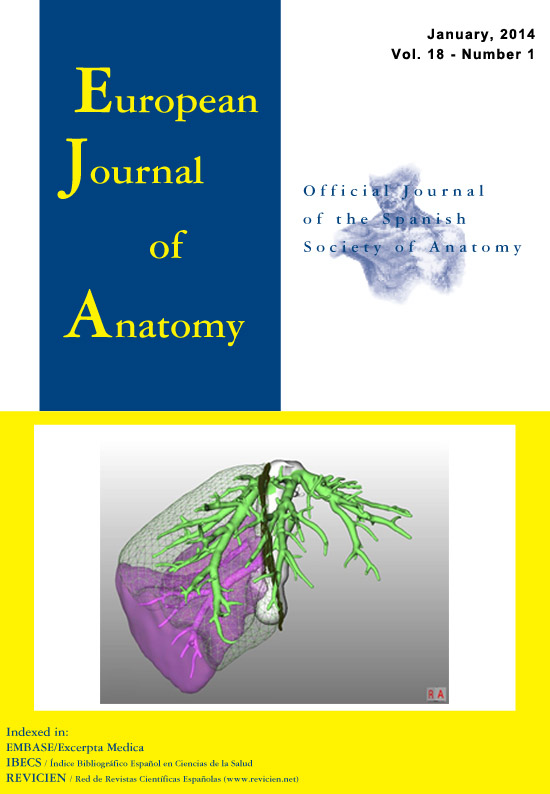
Eur J Anat, 18 (1): 8-15 (2014)
Relationships between bending and torsional strengths of the tibia and simple anthropometric variables among the prehispanic population of El Hierro (Canary Islands)
Emilio González-Reimers1, Matilde Arnay-de-la-Rosa2, Aioze Trujillo-Mederos2, Manuel Machado-Calvo3, Alejandra C. Ordóñez2, Diego M. Pérez-Díaz3, José M. González-Pérez1 and Agustín Castañeyra-Perdomo4
1Dpto. de Medicina Interna, Universidad de La Laguna, Tenerife, Hospital Universitario de Canarias (La Laguna/Tenerife), 2Dpto. de Prehistoria, Arqueología, Antropología e Historia Antigua (La Laguna/Tenerife), 3Dpto. de Radiología. Universidad de La Laguna, Tenerife Hospital Universitario de Canarias (La Laguna/Tenerife) and 4Dpto. de Anatomía y Anatomía Patológica, Universidad de La Laguna, Tenerife, Canary Islands (Spain)
ABSTRACT Assessment of skeletal robusticity is an important tool for the archaeologist and anthropologist, since it may be related to the intensity and type of activity performed by ancient population groups. Development of computed tomography (CT) allows determination of biomechanical properties of long bones. However, CT technology may not be easily available and is a relatively expensive procedure. Therefore, it is pertinent to estimate whether any of the parameters which can be easily measured in bare bones by simple anthropometry are useful to assess the torsional strength and bending strength of these bones. We included twenty one well preserved tibiae corresponding to prehispanic adult individuals (13 men) of El Hierro. These bones were anthropometrically measured following classical methods, and also subjected to CT analysis, and further calculation of minimum and maximum second moments and polar second moment of area, both at midshaft and at the nutrient foramen levels, using the software (www.hopkinsmedicine.org/FAE/mmacro.htm). The diaphyseal robusticity index showed a close relationship with minimum second moment of area at the nutrient foramen (r=0.824, p<0.001) and polar second moment of area at the nutrient foramen (r=0.824, p<0.001), whereas correlations with the epiphyseal robusticity index were weaker (r=0.628, p=0.005, and r=0.618, p=0.007, respectively). The variable which allows the best estimation of the torsional strength is the perimeter at the nutrient foramen, by the formula Polar second moment of area (in mm3) = -700.30 + 11.77 * perimeter at the nutrient foramen (in mm) for the whole population (standard error of the estimation=56.91; absolute range from-114.26 to 140.29), or Polar second moment of area (in mm3) = -897.93 + 13.74 * perimeter at the nutrient foramen (in mm) when only men were analyzed, with a standard error of the estimation of 32.17 (absolute range= from -44.53 to 50.32 mm3).
Keywords: Polar second moment of area, Bone strength,Bone cross sectional geometry, Prehispanic population of the Canary Islands
European Journal of anatomy
ISSN 2340-311X (Online)
ISSN 2340-311X (Online)

